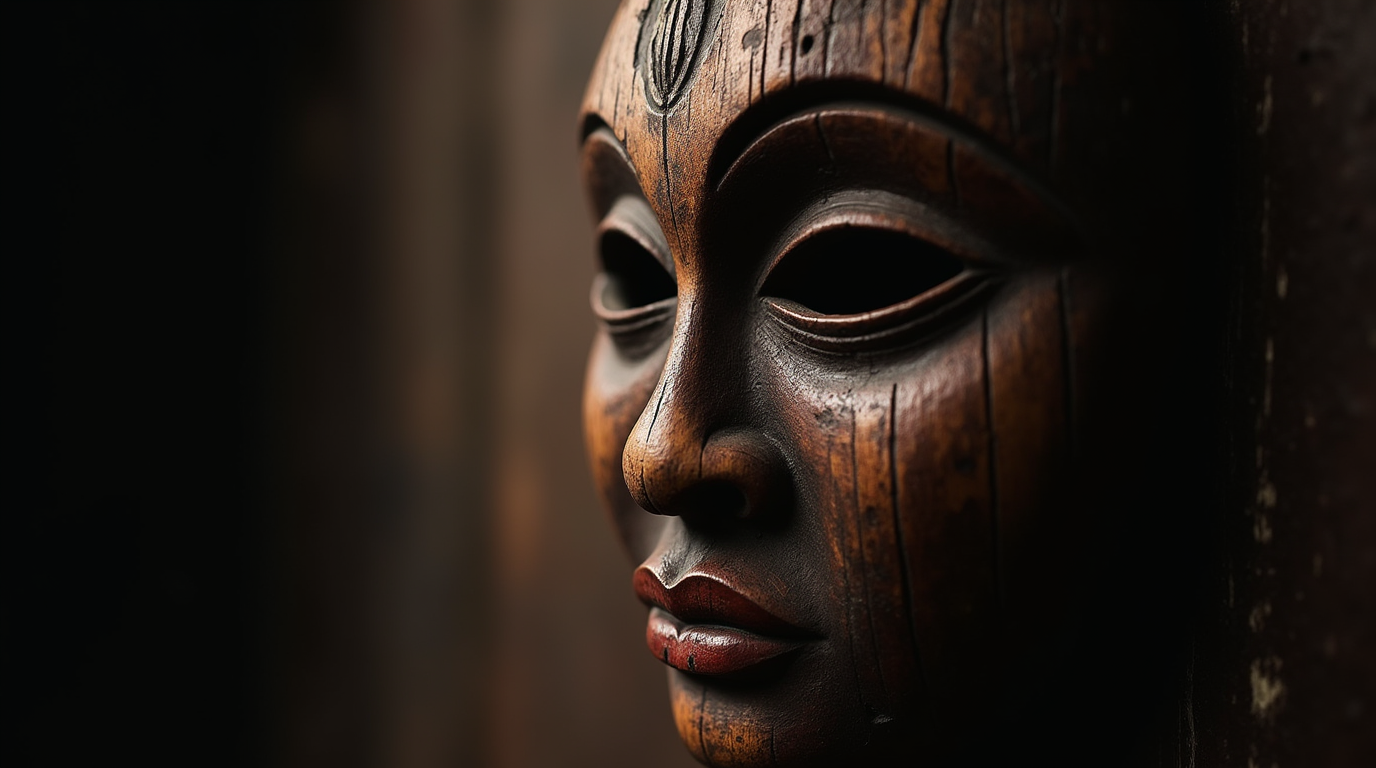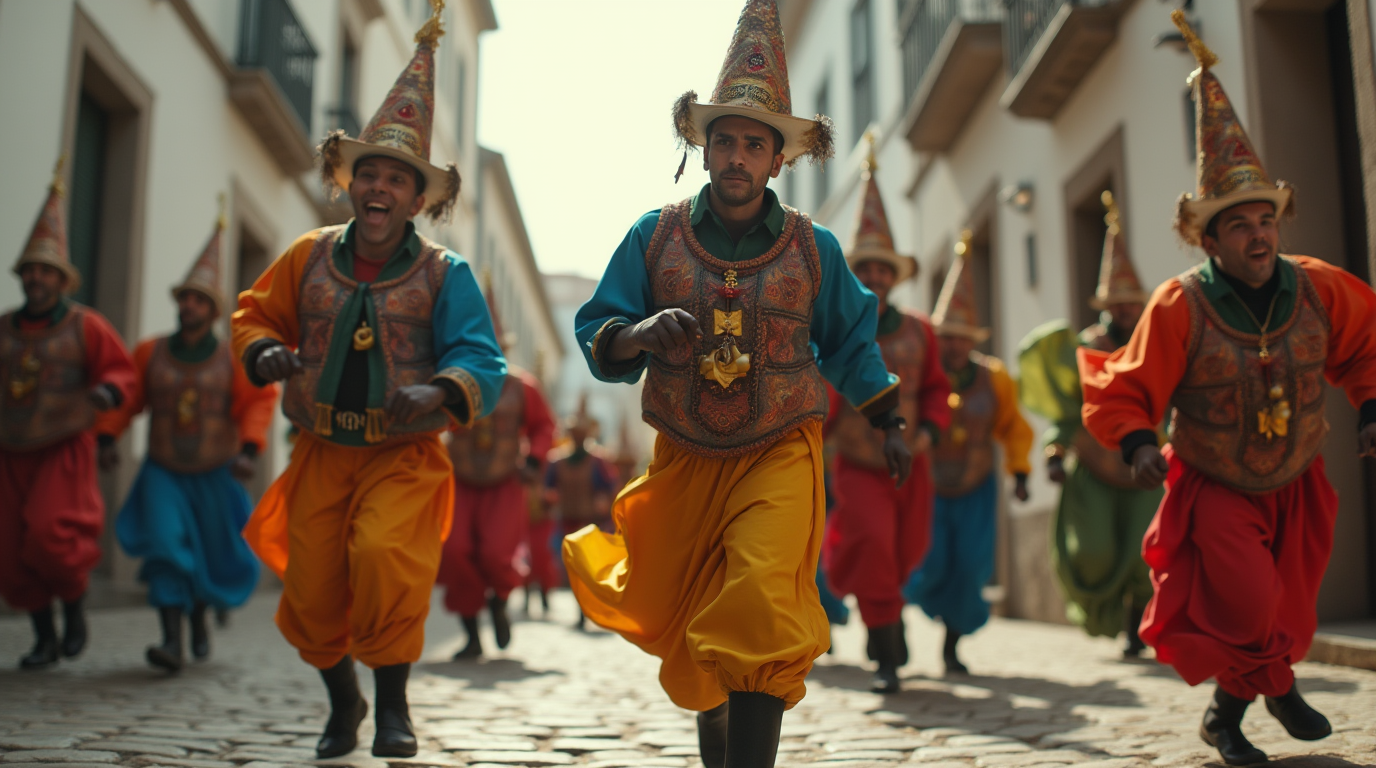Alright, buckle up, because we’re about to embark on a journey to the wild side Caretos of Northern Portugal. Forget the sun-soaked beaches for a moment; we’re diving headfirst into a world of masks, bells, and ancient rituals: the fascinating realm of the Caretos. If you’ve ever thought Portugal was just about pastel de nata and Fado music, prepare to have your mind blown. These aren’t your typical tourist attractions; they’re a vibrant, living embodiment of centuries-old traditions, a spectacle that’s both thrilling and profoundly meaningful. I mean, who wouldn’t want to witness a group of masked figures, running through the streets, making a ruckus? It’s like stepping into another world. So, let’s get started, shall we?
Table of Contents
What Exactly are Caretos of Northern Portugal? More Than Just Scary Masks
So, what are these Caretos anyway? At first glance, they might seem a bit intimidating, even a little spooky. Imagine a figure, often male (though increasingly, women are participating), adorned in a brightly colored costume, a truly terrifying mask covering their face, and a set of clanging bells around their waist. It’s like a medieval carnival character that’s come to life. They run through the villages, sometimes playfully chasing locals, sometimes just making their presence known, their bells jingling a wild, almost hypnotic rhythm. But don’t let the initial impression fool you. These aren’t just random costumes; they are deeply rooted in tradition and symbolism.
The Roots of the Ritual: Tracing Back Through Time
The origins of the Caretos are shrouded in a bit of mystery, as many ancient customs are. They’re like a whisper from the past, echoes from a time when agricultural cycles and community life were intimately intertwined. Many historians believe the practice has pre-Christian roots, possibly stemming from pagan winter solstice celebrations or rites of passage connected to fertility and the arrival of spring. Think about it: masked figures emerging as the days grow longer, heralding a new cycle of growth and abundance. It’s a beautiful metaphor, if you ask me. While the exact origins remain a bit hazy, the persistence of the tradition through centuries tells a powerful story of cultural resilience.
The Significance of the Masks: More Than Meets the Eye
Those masks though! They’re not just there to look cool or scary. They’re a crucial element of the Careto identity. Typically made from wood, leather, or even metal, each mask is unique and reflects the specific village’s style and traditions. They transform the wearers, allowing them to take on an almost mythical persona, a character that transcends their everyday identity. The act of donning the mask is like crossing a threshold, stepping into a different realm where societal norms and inhibitions are suspended for a while. It’s a form of temporary liberation, a way to express the collective spirit of the community.
Costumes and Bells: A Rhythmic Symphony
And let’s not forget the rest of the ensemble! The costumes, often made from wool or cotton, are colorful and vibrant, adding to the festive atmosphere. But, it’s the bells that really bring the whole spectacle to life. The constant clanging of the bells is almost hypnotic, creating an auditory rhythm that permeates the villages as the Caretos move through the streets. It’s a sound that’s both chaotic and captivating. It is a sign of the arrival of the characters, announcing their presence, and filling the air with a sense of excitement and anticipation. It is also believed to ward off evil spirits, adding another layer to the rich symbolism of the tradition.
Where and When Can You Witness This Ancient Spectacle?
Okay, so you’re intrigued, right? You want to witness these masked marvels for yourself. Good news: that’s totally doable! But, you can’t just rock up to Portugal any time of the year and expect to see Caretos dancing through the streets. This is a tradition deeply tied to specific times and places. You will need to plan your trip well to get to the right place at the right time. The Caretos are not a permanent spectacle; they appear during specific festivals and seasons. It’s like nature’s own calendar, marked by the rhythm of these unique celebrations.
The Carnival Season: The Peak of Careto Activity
The main time you’ll see the Caretos in action is during the Carnival season, which usually falls in February or March, depending on the year. This is when the villages of Northern Portugal come alive with parades, music, and of course, Caretos. The Carnival celebrations aren’t like the massive parades you might see in Rio; they’re a more intimate, village-centric affair. There is a unique energy during this period, an electricity in the air, as the community comes together to celebrate and carry forward this powerful tradition. It’s a time of release, a way to shake off the winter blues and usher in the promise of spring.
Specific Villages and Their Unique Careto Traditions
Now, here’s the thing: not all villages in Northern Portugal celebrate Caretos in the same way. Each village has its own unique spin on the tradition. For example, the Caretos of Podence are famous for their vibrant red and yellow costumes and the boisterous way they ‘attack’ the bystanders. In Lazarim, the Caretos wear wooden masks and black hooded capes, giving them a more somber and mysterious appearance. Exploring these different villages offers a fascinating glimpse into the diversity and richness of Careto culture. It’s like flipping through the pages of a living history book, each village narrating its own unique story.
“The Caretos are the heartbeat of our villages, a reminder of who we are and where we come from.” – Local villager in Podence

The Challenges Faced by Caretos of Northern Portugal Traditions in Modern Times
Like many ancient traditions, the Caretos face challenges in the modern world. These aren’t just figures from a history book; they’re a living, breathing part of Portuguese culture. However, the modern world is always pressing in, changing cultural landscapes. Preserving this traditions is not without its own set of obstacles and difficulties that have to be tackled carefully. It requires a delicate balance between celebrating their heritage and protecting it from the pressures of the 21st century. This is an ongoing conversation that communities are actively engaging with to protect the future of this beautiful tradition.
Urbanization and Shifting Cultural Priorities
One of the main challenges is the migration of people from rural areas to urban centers. As younger generations move away in search of education and employment opportunities, the villages that have traditionally been the guardians of the Careto tradition have seen a decline in population. This means fewer people to carry on the rituals, to make the masks, and to pass down the stories. It’s a phenomenon that threatens the vitality of cultural heritage. It also causes new influences from outside that can conflict with the traditional values. It’s a tough balancing act.
Balancing Tourism and Authenticity
Tourism can be both a blessing and a curse for the Careto tradition. While the growing interest from tourists can bring much-needed economic support to the villages, it can also lead to the commodification of cultural practices. The line between a genuine experience and a performance for tourists can become blurred. There’s always a fear that the traditions will lose their original meaning and become just another form of entertainment. This requires careful planning and a lot of thoughtful decision-making. The communities that safeguard this tradition have to navigate a narrow path that ensures their tradition survives in its purest form while also getting recognition and support.
The Difficulty of Maintaining the Original Rituals
Beyond urbanization and tourism, there’s also the challenge of maintaining the authenticity of the rituals themselves. Over time, traditions can evolve, and sometimes these changes can dilute the original intent and meaning. The costumes might change, the masks might become more commercialized, or the rituals might lose some of their original elements. There’s always a risk of the traditions losing their soul, so to speak. It’s a constant struggle to balance tradition with evolution, to ensure the Careto celebrations remain meaningful and true to their roots. The communities need to actively monitor this delicate balance to make sure that the traditions remain both vibrant and true to themselves.

Common Misconceptions about Caretos of Northern Portugal and Their Meaning
Because the Caretos are such a unique and intriguing tradition, they are often misinterpreted. It’s easy to make assumptions based on surface-level observations, leading to misconceptions about their true purpose and significance. It is critical to understand that they are not just scary figures running around aimlessly. They are not what most people might first assume. Let’s debunk a few of these common misconceptions.
The Link Between Caretos of Northern Portugal and Other European Masked Traditions
One of the most common misconceptions is that the Caretos are completely unique to Northern Portugal. However, they are part of a broader European tradition of masked rituals and carnival celebrations. Many European countries have their own versions of these types of masked figures, often associated with the winter solstice or the arrival of spring. Think of the Krampus in Austria or the Busójárás in Hungary. These traditions share common themes and symbolism, even though they manifest in different ways. Recognizing these links helps us understand that the Caretos are not an isolated phenomenon but part of a shared cultural heritage. It also creates a greater appreciation for the universality of some of the human cultural expressions.
Debunking Myths: Not Just Devilish Figures
A major misconception is seeing Caretos as evil figures. While their masks and costumes can be intimidating, they aren’t malevolent. They represent a mix of human and animal traits, bridging the real and spirit worlds. They embody nature’s untamed forces, reminding us of life’s unpredictability. Caretos symbolize fertility, renewal, and the cyclical nature of time. They are not to be feared but celebrated as symbols of community and resilience, not malevolence.
Experiencing the Caretos of Northern Portugal Tradition: A Guide for the Curious Traveler
So, you’re now fascinated by the Caretos and eager to experience the tradition firsthand. Great! But before you pack your bags and head off to Northern Portugal, perhaps checking out Artículos del Portugués or Travelite Basics Portugal for travel gear, there are a few things you should know to ensure a respectful and enriching experience. This isn’t just about seeing a spectacle; it’s about understanding and appreciating a living cultural heritage, whether you’re visiting Amadora, Almada or even a place further north like Caminha Portugal. The way you engage with the tradition matters, it’s about more than just taking photos and videos. It requires genuine interest and some preparation to be a responsible and welcome visitor to these communities.
How to Respect the Tradition and its People
Remember, you’re a guest. Treat the communities and Caretos with respect, whether you are in one of the large or small towns. Don’t touch masks or costumes without permission; they aren’t zoo animals. These are people engaged in a meaningful ritual. Interact respectfully, ask questions, and be mindful of their customs. Cultural awareness is key to an enjoyable visit, regardless of where in Portugal you may have travelled from. Be open to learning and avoid being disruptive; engage positively, not just passively.
Best Times to Travel and Witness the Celebrations
The main time to see Caretos is during Carnival (February/March), but some villages hold celebrations at other times too, so research is key. Local tourism websites and community calendars are your best bet for schedules, wherever you find yourself within Portugal. These events are usually local, not widely advertised. Planning ahead prevents disappointment. For a richer experience, join a specific village’s celebration; you’ll witness more than just costumes and masks, you’ll become part of the community event.
“To understand the Caretos, you must understand the heart of our villages. It’s not just a performance; it’s a way of life.” – Local cultural leader in Bragança
The Future of Caretos of Northern Portugal: Preservation and Evolution
The future of the Careto tradition depends on the delicate balance between preservation and evolution. It’s not enough to just maintain the tradition as a static artifact. It has to stay relevant, dynamic, and meaningful for future generations. The challenge is to find innovative ways to pass on this cultural heritage while also adapting to the ever-changing modern world. It requires active participation and engagement from both the local communities and the wider world. It also demands active decision making to help shape what the future of this ancient tradition looks like.
Passing the Tradition to Younger Generations
One of the most crucial aspects of preservation is ensuring that younger generations feel connected to the tradition. This can be achieved through community workshops, educational programs, and active participation in the celebrations. It’s also about creating an environment where young people feel proud of their cultural heritage. It is about inspiring a love for the unique history of these villages. It’s not just about performing the rituals correctly. It is about understanding the purpose and the value of the traditions. When they feel like it is something they truly own, they will continue to carry it forward with passion.
The Role of Community and Cultural Organizations
Finally, community and cultural organizations play a vital role in preserving the Careto tradition. They can help organize events, secure funding, and promote cultural awareness. They also act as a voice for the communities, ensuring their needs are met and their voices are heard. They are at the forefront of these efforts, working tirelessly to safeguard their unique heritage. The future of the Careto tradition is a shared responsibility. A collective effort from local people, cultural organizations, and even tourists to make sure it continues to thrive for generations to come.



